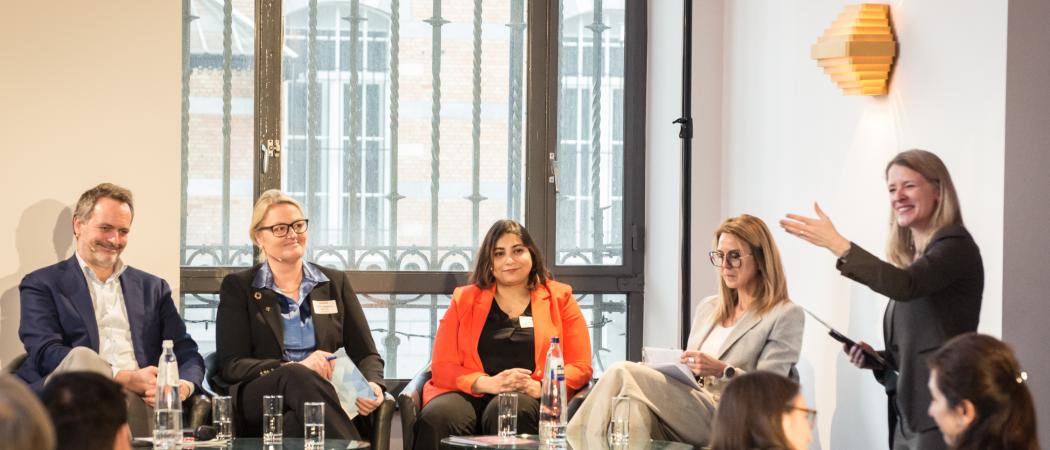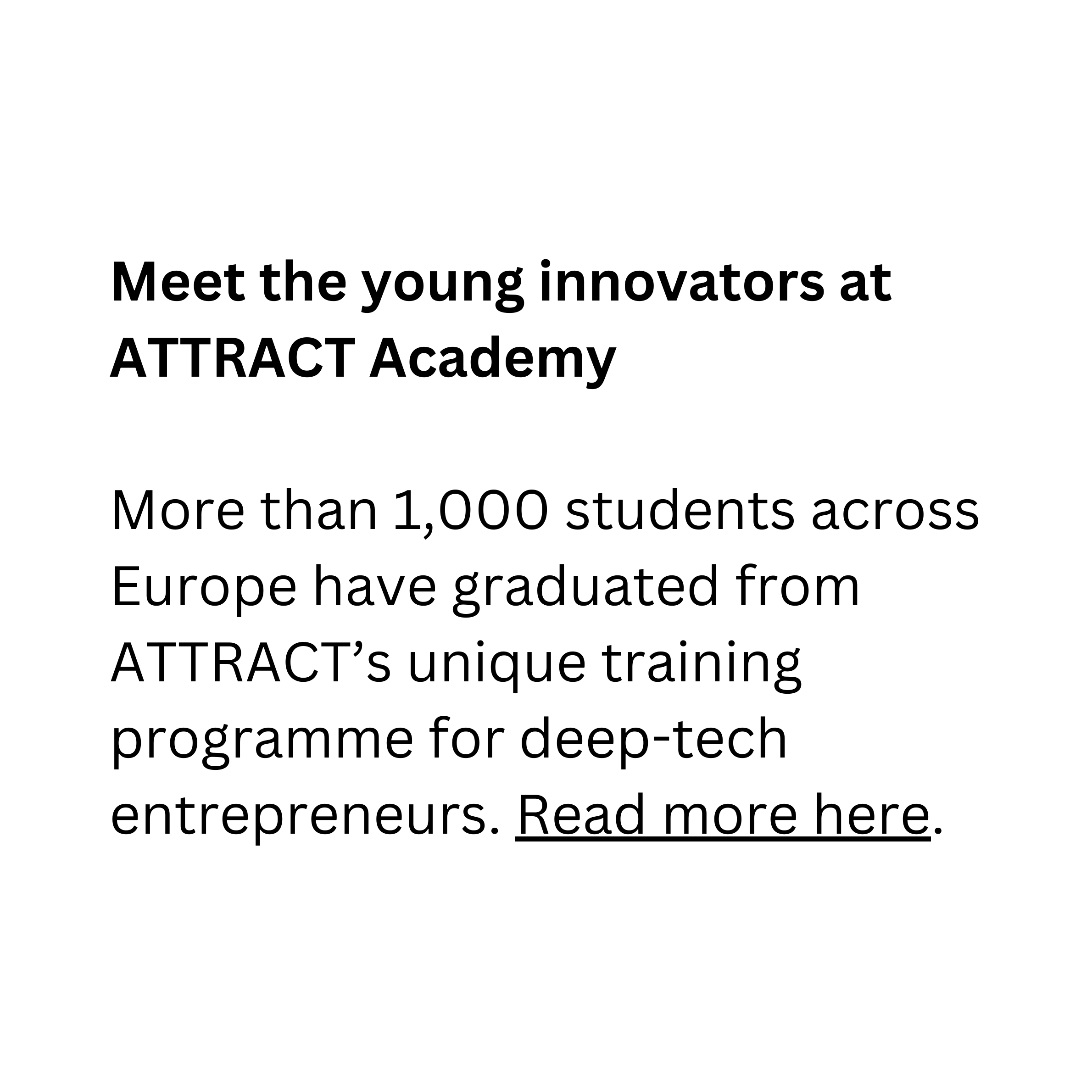At a Science|Business conference, policy leaders urge action to keep Europe competitive in tech markets. ‘Stop talking and start doing,’ MEP warns

From left to right: René Repasi, Member, European Parliament, Toril A. Nagelhus Hernes, Chair, Expert Group on Innovation, EUA and Pro Rector, Innovation, NTNU, Shreyasi Kar, Head of Operations, Aalto Design Factory, Aalto University and Project Consortium Board Member, ATTRACT, and Antoaneta Angelova-Krasteva, Director, Innovation, Digital Education and International Cooperation, DG EAC, European Commission
To compete in global tech markets, Europe needs to hurry up and invest more in training its next generation of science and tech innovators, said a group of policy leaders at a Science|Business conference 6 February.
“If Europe is serious about staying competitive, it needs to stop talking and start doing,” said René Repasi, a German member of the European Parliament.
“We have this huge competitiveness debate in Europe, and the only way forward is innovation,” he said. “We don’t have the fiscal capacity to match China or the US in public investment. What we have is talent—and if we don’t invest in it properly, we’re finished.”
His view was seconded by a leading educator, Toril A. Nagelhus Hernes, pro-rector for innovation at NTNU-Norwegian University of Science and Technology, and chair of the European University Association’s expert group on innovation. “If Europe wants to compete, it must invest in the people who will make innovation happen,” she urged.
The discussion, at the Science|Business Network’s annual conference in Brussels, comes at a critical moment. Mounting tech competition, an emerging trade war, a defence build-up and tight member-state budgets are hitting the EU all at once. Urgent action is needed, said Repasi, who is “shadow rapporteur”, or coordinator, for the Socialists & Democrats party in drafting the next EU research and innovation policy in Framework Programme 10. “Innovation isn’t something you train—it’s something you ignite.”
ATTRACT Academy: deep-tech in action
The discussion, in a panel supported by the ATTRACT project, was about real-world impact of policy - turning deep-tech research into market-ready solutions.
Since its start in 2018, the EU-funded ATTRACT consortium led by famed physics lab CERN has invested in more than 170 projects on detection, sensing and monitoring technologies. And in its ATTRACT Academy initiative, it has paired many of those tech projects with more than 1,000 young innovators from universities across the EU – moving the technologies closer to market, while training young talent. Designed to break down traditional silos, the Academy connects the ATTRACT technology grantees, students and deep-tech innovators, providing them with the tools, culture and mind-set to think beyond the lab.
Shreyasi Kar, head of operations at Aalto University’s Design Factory and an ATTRACT Project Consortium board member, described the Academy as “an experiment”with a clear intent: “We can create an ecosystem where people come together, where serendipity happens.” She acknowledged that in research, breakthroughs often take years to reach society. “With students in the mix, they immediately start asking: What else can this technology do?”
One of those students was Lucienne De Waal, an industrial designer and ATTRACT Academy graduate, who brought hard data to the discussion: “Seventy percent of the world’s freshwater is used for agriculture. Thirty percent of that is wasted.” Working with her ATTRACT team, she helped develop HYGER, a drone-mounted water sensor system that flies over a farmer’s field to analyse soil moisture and provide real-time insights on irrigation. The result? Lower water waste, higher crop yields.
For Pau Jordan Oliveras, a CERN system engineer and ATTRACT alumnus, the programme was about breaking down the barriers between disciplines. His team worked on POSICS-2, a CERN-developed radiation detection technology traditionally used in hospital PET scans. The challenge? Bringing this powerful imaging capability to patients who live too far from specialised oncology centers. “More than 800,000 people in Spain undergo cancer treatment, and PET scans are only available in major hospitals,” he explained. “What if we could bring that tech closer to the patients?”
With ATTRACT’s “learn by doing” approach, Oliveras and his team built a portable, motion-sensitive imaging device, integrating CERN’s technology with AI-driven analysis. “We developed this in six months, talking to patients, doctors, imaging specialists. Then we took it to CERN scientists, put it on a whiteboard, and asked: how do we improve it?”
Charting the way ahead
Despite the success stories, a bigger question was in the background: if initiatives like ATTRACT work, why aren’t they the norm in European research policy?
Antoaneta Angelova-Krasteva, director for innovation, digital education and international cooperation at the European Commission’s education department, tackled this head-on. She argued that cross-sector collaboration needs structural support, not just one-off pilot projects. “Research infrastructures have enormous hidden value, but it’s not always visible. Sometimes it’s about just giving it visibility, making better use of what already exists.”
One proposal under discussion is scaling ATTRACT-like initiatives through European University Alliances, an EU-funded programme creating cross-border university consortia now involving more than 570 institutions across the continent.
Reposi’s concern was broader still. “We need to cut useless red tape. Researchers should apply for funding based on ideas, not bureaucratic checklists,” he argued. “And when startups emerge from this work, they shouldn’t be immediately snapped up by American investors, stripping Europe of its own innovation.”
ATTRACT is a Horizon 2020 project led by CERN in a consortium with five other research infrastructures, two universities and an industry association. It funds development of novel sensing, monitoring and detection technologies, in an EU-wide ecosystem connecting researchers, innovators and students to advance Europe’s deep-tech capacity.






 A unique international forum for public research organisations and companies to connect their external engagement with strategic interests around their R&D system.
A unique international forum for public research organisations and companies to connect their external engagement with strategic interests around their R&D system.